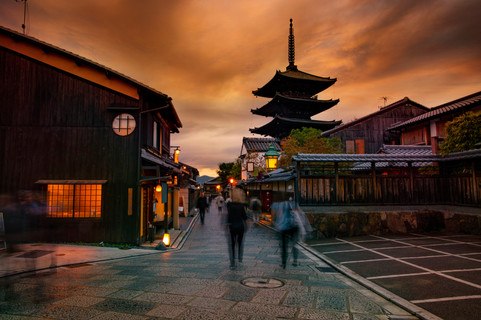Kyoto, steeped in traditions and beauty, has remained relatively unchanged for many centuries. It’s untarnished beauty and historic background in conjunction with original wooden houses, ancient temples, and geishas hurrying on their way effortlessly charms visitors from across the world.
In Japanese culture, the home of the Emperor is considered the capital, and with the Emperor taking up residence following Kyoto’s inception in 794 A.D, the city served as the capital of Japan for more than a millennium. Afterwards, in 1868, following the Meiji Restoration, the Royal Family relocated to Tokyo, the new capital, where they have remained ever since. During Kyoto’s time as the capital, it became a repository of much of the best Japanese art, culture, religion and thought - a reputation that remains even today.
And though Kyoto is no longer the capital, it continues to serve as the spiritual heart of the country, a fact most evident when you learn that the city is home to more than 1,500 (by some accounts, more than 2,000) temples and shrines, many of which are architectural icons in their own right.

Of these many temples and shrines, 17 have been deemed a UNESCO World Heritage Site, resulting in one of the world’s largest collections of World Heritage Sites; the 17 sites including everything from the gilded splendor of Kinkaku-ji and its silver counterpart, Ginkaku-ji, all the way to the mountainous temples of Kozan-ji and Enryaku-ji.
With such a rich historical background, it comes as no surprise that Kyoto served as the setting for the world’s oldest novel, The Tale of Genji. Set in then Heian-kyo (present day Kyoto), the story is a tale of societal customs, political intrigue and love, and it is as popular today as it was when it was first published in the early 11th Century. In 1998, The Tale of Genji Museum was opened, taking visitors through a series of exhibitions based on various scenes of this unforgettable tale.








Comments